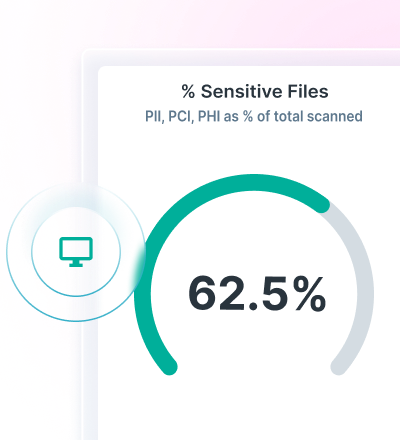Operationalising MITRE ATT&CK: Bridging The Gap Between Frameworks & Real-World Defence
0 minutos de leitura
The MITRE ATT&CK framework has become a global reference point for cyber defence. It is a living knowledge base that documents adversary tactics, techniques and procedures observed in the wild. By breaking down attacks into their component behaviours, ATT&CK gives defenders a common language to describe how intrusions unfold — from reconnaissance to impact.
Yet for many enterprises, ATT&CK remains more of a reference chart than an operational tool. Teams proudly display coverage heatmaps in dashboards, but the day-to-day mechanics of detection and response often remain unchanged. The result is a gap: organisations map threats in theory but fail to shift how they defend in practice.
The basics of MITRE ATT&CK
- What it is — The MITRE ATT&CK framework, short for Adversarial Tactics, Techniques and Common Knowledge, is a globally recognised knowledge base of attacker behaviours, built from real-world intrusions. It translates technical tradecraft into a structured map of how adversaries gain entry, move laterally and achieve their objectives. It’s sometimes called MITRE ATTACK, or MITRE ATT, but MITRE ATT&CK is the correct and recognised name.
- Why it matters — It gives defenders a common language to align strategy, investment and operations. Instead of discussing “advanced threats” in vague terms, teams can point to specific tactics and techniques, measure coverage and prioritise gaps.
- Where it came from — Developed in 2013 by the not-for-profit MITRE Corporation, ATT&CK was initially designed to test intrusion detection and response capabilities. It has since evolved into the industry’s de facto reference for adversary behaviour, adopted by governments, enterprises and security vendors worldwide.
- Where the value lies — The framework itself is not a silver bullet. The advantage comes from using it to guide data collection, shape detection rules, validate defences and drive continuous improvement.
Missteps that limit value of the MITRE framework
Despite its adoption, most organisations fall into predictable traps when using the MITRE ATT&CK framework. Recognising these failure modes is the first step to operationalising the blueprint effectively.
Coverage theatre
Security teams often present impressive ATT&CK Navigator diagrams full of green boxes, but coverage on paper doesn’t always translate to real-world defence. Gaps in telemetry, incomplete analytics or weak integrations leave blind spots that attackers can exploit. A chart showing techniques as “covered” means little if the underlying detection rules fail to trigger or if analysts cannot act on them fast enough.
One-and-done mapping
ATT&CK evolves continuously. New techniques and sub-techniques are added as adversaries shift their playbooks. Treating the MITRE framework as a one-off mapping exercise creates a false sense of security. Detection rules, playbooks and controls must be refreshed in step with the framework itself; otherwise, what looks comprehensive today becomes obsolete tomorrow.
Inconsistent CTI mapping
Threat intelligence is only as valuable as its alignment to ATT&CK. Poorly mapped reports lead to analytical bias, missed context and wasted effort. When different teams map intelligence differently, the result is fragmentation instead of clarity. Following structured guidance, such as CISA’s best practices for ATT&CK mapping, avoids this drift and ensures that every detection, playbook and response plan is grounded in consistent definitions.
The operational core: five moves that make MITRE ATT&CK real
1. Instrument the right data sources
Operationalising the MITRE ATT&CK framework begins with visibility. Singaporean enterprises expanding cloud adoption and hybrid work must collect the right telemetry: from endpoints, servers, cloud workloads and network devices. ATT&CK coverage heatmaps only mean something if the underlying data is there to see the techniques in action.
2. Map detections with intent
Every analytic should point to a specific MITRE ATT&CK technique, with test cases that confirm it works. Too often, detection rules exist without precise alignment to adversary behaviours. By using ATT&CK-based adversary emulation plans, security teams can validate whether their tools catch techniques standard in regional threat campaigns, from credential dumping to spear phishing.
3. Prioritise with threat intelligence
Not every tactic in the MITRE framework is equally relevant. Local threat actors in Southeast Asia often rely on well-documented techniques like phishing, PowerShell misuse and lateral movement through stolen credentials. Weighing ATT&CK coverage against live threat intelligence allows teams to focus on what adversaries in this region are using now, not just on what looks impressive on a chart.
4. Purple team to validate and iterate
The MITRE ATT&CK framework is most potent as a shared language between red and blue teams. It gives both sides a common taxonomy of adversary behaviours, so offensive exercises can be mapped directly to defensive detections and controls. This turns testing into a feedback loop where gaps are clearly identified, addressed and re-tested using the same reference points.
In Singapore, many enterprises have moved past basic cyber hygiene and now face elevated expectations for defence maturity. Purple-teaming initiatives, aligned to MITRE ATT&CK, are becoming standard practice among organisations in finance, critical infrastructure and regional operations hubs. These exercises validate detection controls, test incident flows and surface systemic weaknesses.
5. Measure outcomes, not artifacts
In Singapore, boardrooms and regulators expect more than lip-service to technique. Under the Cybersecurity Act 2018 and sector-specific directives, organisations must show how quickly they identified and contained threats, not just how many tactics are listed as “covered”. Use ATT&CK Navigator visuals to demonstrate improvements in detection depth, response timelines and containment scope. Make the framework a quantifiable tool of governance, not simply decoration in the SOC dashboard.
From visibility to prevention: closing the last mile
A common frustration in organisations is the gulf between visibility and action. ATT&CK is excellent for mapping, but the advantage is lost if detections don’t trigger meaningful responses. Bridging this means automating containment steps (isolating a host, revoking credentials, tightening access) when ATT&CK-mapped behaviours are confirmed.
This is where the MITRE framework leaves the whiteboard and shapes real-world defence. It ensures that when an adversary tactic is recognised, the organisation does not just watch, but acts. For leaders dealing with talent shortages and high alert volumes, automation is perhaps the only way to operationalise ATT&CK at scale.
Practical scenarios for Singapore leadership
- Kill-chain breakpoints — For example, a regional data-centre operator in Singapore might trace a supply-chain attack starting with mis-configured permissions, pivoting via lateral movement and ending in a data exfiltration attempt. Mapping this flow against the ATT&CK framework enables teams to test and validate whether their telemetry, alerting and response controls would intercept at each phase.
- Sector overlays — A Singapore-based wealth-management firm might focus on techniques common to Asia-Pacific advanced threats, such as credential theft via mobile banking and API abuse. Meanwhile, a logistics hub might prioritise lateral movement and illicit container-data access. With Navigator layers tailored by sector, each organisation builds targeted defences rather than generic lists.
- Continuous validation – Singapore’s regulators increasingly expect evidence of uplift. Quarterly purple-teaming mapped to ATT&CK delivers measurable proof: faster detection, reduced dwell time, fewer manual escalations. That evidence builds confidence in regulators, customers and internal stakeholders.
From framework to defence reality
By embedding MITRE ATT&CK into data collection, detection engineering, purple teaming and automated response, organisations move from mapping threats on slides to stopping them in real environments.
Enterprises can take this further with Forcepoint’s Risk Adaptive Protection and data-first security approach. ATT&CK mappings become more than visibility; they feed adaptive policies that respond to user behaviour and data context in real time. The result is not just awareness of adversary tactics, but active, automated defence that scales with the threat landscape.
Explore how Forcepoint helps organisations operationalise the MITRE ATT&CK framework into day-to-day protection.
No Artigo
X-Labs
Receba insights, análises e notícias em sua caixa de entrada

Ao Ponto
Cibersegurança
Um podcast que cobre as últimas tendências e tópicos no mundo da cibersegurança
Ouça Agora








